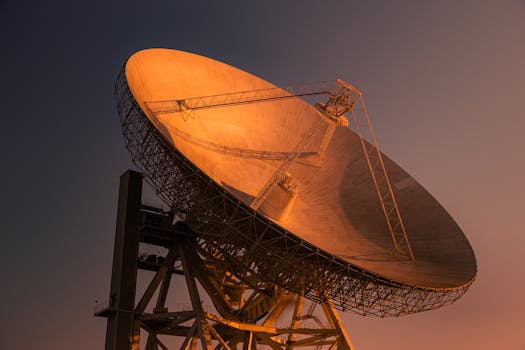Satellite Telecommunications 2023: Key Developments and What They Mean for the Industry

Satellite Telecommunications 2023: Key Developments and What They Mean for the Industry
Satellite Telecommunications 2023 has been a remarkable year for the satellite telecommunications industry, marked by significant developments that are transforming the landscape of global communication. The industry has experienced considerable growth, driven by advancements in technology, increased demand for satellite-based services, and the expansion of existing companies into new markets. In this article, we will delve into the key developments that have shaped the industry in 2023 and explore their implications for the future.
Advancements in Satellite Technology
One of the primary drivers of the satellite telecommunications industry’s growth in 2023 has been the significant advancements in satellite technology. The development of more efficient and powerful satellites has enabled the provision of faster and more reliable services, catering to the increasing demand for high-speed internet and data transmission. Companies such as SpaceX and Amazon’s Kuiper Systems have been at the forefront of this development, launching numerous satellites into orbit and expanding their constellations.
The introduction of new satellite technologies, such as phased array antennas and advanced propulsion systems, has also improved the performance and lifespan of satellites. These innovations have enabled satellites to operate more efficiently, reducing the cost of launching and maintaining them. Furthermore, the development of smaller, more agile satellites has opened up new opportunities for companies to launch constellations of satellites, providing global coverage and enhancing the overall quality of service.
Increased Demand for Satellite-Based Services
The demand for satellite-based services has experienced a significant surge in 2023, driven by the growing need for global connectivity and the increasing adoption of remote work. The COVID-19 pandemic has accelerated this trend, as companies and individuals have turned to satellite-based services to maintain communication and stay connected. The use of satellite-based services has also become more prevalent in industries such as maritime, aviation, and agriculture, where reliable and high-speed communication is critical.
The growth of the Internet of Things (IoT) has also contributed to the increased demand for satellite-based services. As more devices become connected to the internet, the need for reliable and global connectivity has become more pressing. Satellite telecommunications companies have responded to this demand by launching new services and expanding their existing offerings, providing customers with a range of options for staying connected.
Expansion of Existing Companies and New Market Entrants
The satellite telecommunications industry has witnessed significant expansion in 2023, with existing companies launching new services and entering new markets. Companies such as Intelsat and SES have expanded their presence in emerging markets, providing satellite-based services to underserved regions. The launch of new companies, such as Astranis and Omnispace, has also increased competition in the industry, driving innovation and reducing prices.
The expansion of existing companies and the entry of new market players have also led to increased investment in the industry. Venture capital firms and private equity investors have been drawn to the satellite telecommunications industry, recognizing its potential for growth and returns. This influx of investment has enabled companies to develop new technologies, launch new services, and expand their operations, further driving the industry’s growth.



